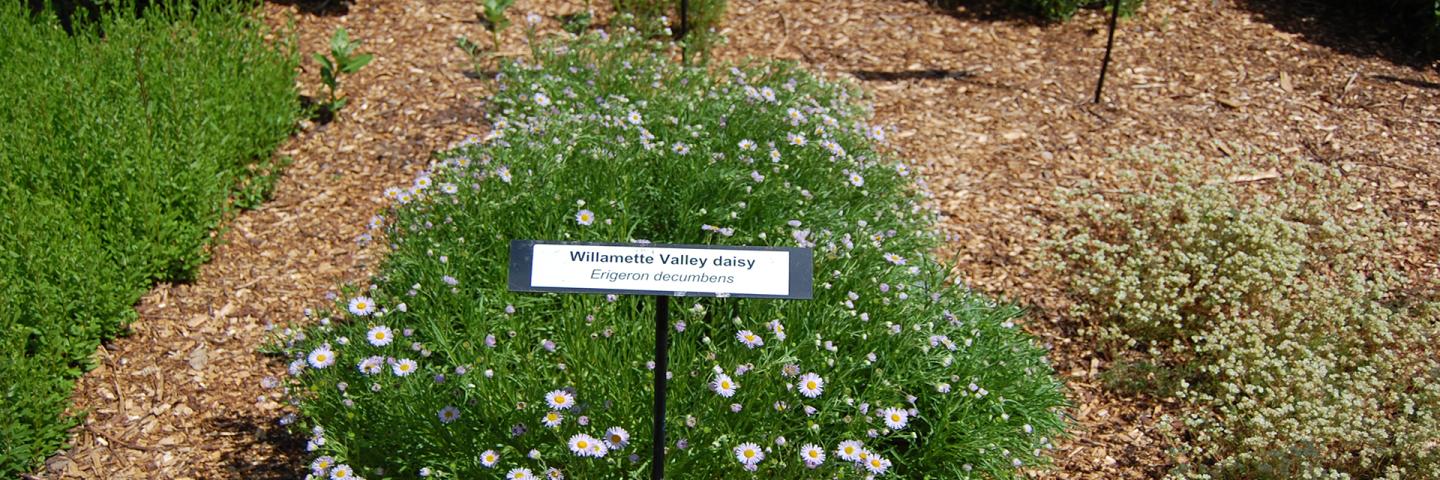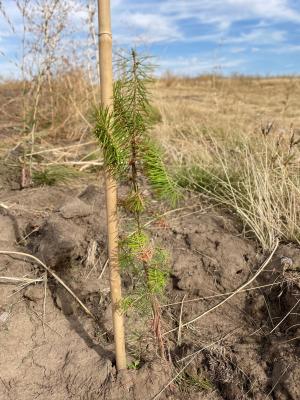Plant Materials on Display in the Northwest

One of the PMC’s best tools for education is the display nursery or demonstration planting. These demonstrations highlight a variety of plant materials and conservation practices and offer field offices and the public a convenient way to see and better understand these practices and plants.
While Plant Materials Centers (PMCs) may be best known for their plant releases and technical documents, a major part of their job is education. Every year the PMCs provide hundreds of hours of training to NRCS field office staff and partners, and they conduct outreach events for private landowners, conservation organizations, tribes, and the public. One of the PMC’s best tools for education is the display nursery or demonstration planting. These demonstrations highlight a variety of plant materials and conservation practices and offer field offices and the public a convenient way to see and better understand these practices and plants. Visitors to the PMC can see, for example, numerous varieties of conservation species planted side by side, or can see examples of plant materials being used in a range of conservation practices. Recently, several new displays have been installed at various PMCs in the Northwest Region. These are open to NRCS field staff and conservation partners at any time and to the public during field days and by contacting the PMC.
Last fall the Aberdeen PMC in Idaho installed a multi-species grass display nursery. The purpose of the display nursery is to allow the public to view a broad selection of grasses used to conserve soil, provide forage for livestock and wildlife, create habitat for wildlife and to improve water quality. The nursery includes 73 varieties showcasing released grasses (and some currently in testing evaluations) of 33 species suited for reclamation, restoration or irrigated pasture plantings in the Aberdeen PMC service area. The display is conveniently laid out according to irrigation needs or reflecting natural precipitation ranges of the various species starting with those species most drought tolerant and suited for arid range plantings and ending with forage and pasture grasses requiring significantly more moisture. This display nursery will allow field office staff and other conservationists to visually compare species and cultivars. It will also be used by the PMC to teach grass taxonomy and identification.

In 2022 the Pullman PMC in Washington State created a 650 ft long, 4-row windbreak demonstration to showcase the benefits of windbreaks in the wind-erosion prone Palouse region. It also provides a “real world” example in which to discuss windbreak installation and maintenance. Additionally, most technical and scientific information on windbreak establishment and associated practices are from the Midwest, therefore the PMC staff decided to evaluate the practice adaption for Eastern Washington and the Inland Northwest. One aspect of establishment is species selection. For their planting they chose a variety of native and non-native trees to evaluate their potential for drought and heat tolerance. They also chose species that could overlap with associated practices such as pollinator plantings, wildlife habitat, and herbaceous wind barriers. The site will be used by PMC staff during formal trainings, but it can also be visited by the public.
Finally, the Corvallis PMC in Oregon is home to a unique plant identification garden containing federally listed plants from the area. The garden consists of four endangered species, plus 5 to 7 lookalikes for each species to help conservationists learn the diagnostic characteristics of each species. The garden is used in conjunction with in-field training allowing field staff get to view the rare plants in their natural habitat. Conservation field staff are welcome to visit at any time to view the phenology of the plants to get a better idea of the optimal survey time.
For more information on the use of conservation plants to address resource concerns contact the nearest Plant Materials Center or specialist. For additional information on species of plants, please see the USDA PLANTS database.

